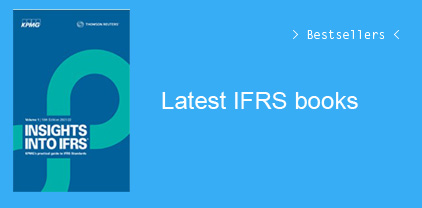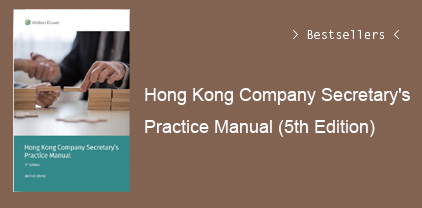For undergraduate and MBA Cost or Management Accounting courses
The text that defined the cost accounting market.
Horngren’s Cost Accounting, defined the cost accounting market and continues to innovate today by consistently integrating the most current practice and theory into the text. This acclaimed, market-leading text emphasizes the basic theme of “different costs for different purposes,” and reaches beyond cost accounting procedures to consider concepts, analyses, and management. This edition incorporates the latest research and most up-to-date thinking into all relevant chapters and more MyAccountingLab® coverage! MyAccountingLab is web-based tutorial and assessment software for accounting that not only gives students more "I Get It" moments, but gives instructors the flexibility to make technology an integral part of their course, or a supplementary resource for students.
Features:
Use the most current information to prepare students for their field
- Emphasis on Global Issues reflect today’s increasingly global business environment.
- Benefits and challenges that arise when outsourcing products/services outside the United States are discussed throughout the text.
- The importance of transfer pricing in minimizing the tax burden faced by multinational companies is explained in the text.
- The text’s examples of management accounting applications in companies are drawn from international settings.
- Focus on the business sector highlights the shifts in the U.S. and world economy.
- Chapters discuss the concepts around the measurement of costs in a software development–rather than a manufacturing setting.
- The text provides several examples of the use of budgets and targets in service companies.
- Several concepts in action boxes focus on the service sector such as activity-based costing at Charles Schwab and managing wireless data bottlenecks.
- The rapid pace of change in today’s organizations is reflected throughout this edition, which include:
- An introduction to foreign currency and forward contract issues in the context of outsourcing decisions. Added ideas based on Six Sigma to the discussion of quality.
- Chapters on strategy and the balanced scorecard, and simplified presentation connecting development, strategy maps, balanced scorecard, and analysis of operating income.
- Discussion of current trends towards Beyond Budgeting and the use of rolling forecasts.
- A discussion on the link between traditional forms of cost allocation and the nascent movement in Europe towards Resource Consumption Accounting.
- A sharper focus on how companies are simplifying their costing systemswith the presentation of value streams and lean accounting.
Provide a solid presentation of accounting hallmarks with a great emphasis on strategy
- Features of the text give students a clear picture of accounting:
- Exceptionally strong emphasis on managerial uses of cost information.
- Clarity and understandability of the text.
- Excellent balance in integrating modern topics with traditional coverage.
- Emphasis on human behavior aspects.
- Extensive use of real-world examples.
- Ability to teach chapters in different sequences.
- Excellent quantity, quality, and range of assignment material.
- Strategy maps are presented as a useful tool to implement the balanced scorecard and a simplified presentation of how income statements of companies can be analyzed from the strategic perspective of product differentiation or cost leadership.
- Strategy considerations in the design of activity-based costing systems are covered.
- The strategy of preparation of budgets is included.
- The strategy involved in decision-making is comprehensively covered.
- Opening Vignettes. Each chapter opens with a vignette on a real company situation. The vignettes get students engaged in a business situation, or dilemma, illustrating why and how the concepts in the chapter are relevant in business.
- Concepts in Action Boxes. Found in every chapter, these boxes cover real-world cost accounting issues across a variety of industries including automobile racing, defense contracting, entertainment, manufacturing, and retailing.
- Streamlined Presentation. The authors continue to simplify and streamline the presentation of various topics in order to make it as easy as possible for a student to learn the concepts, tools, and frameworks introduced in different chapters.
Tailor the material to suit your needs
- This text’s modular, flexible organization can be used to suit a number of different approaches to teaching and learning.
New to this Edition:
- Deeper consideration of global issues in many chapters:
- The special challenges of budgeting in multinational companies (Chapter 6)
- The challenges of evaluating the performance of divisions located in different countries (Chapter 23)
- The differences in the way process flows are accounted for under U.S. and international accounting rules, and the impact of these differences on companies’ margins and after-tax income (Chapter 17 opener)
- The importance of transfer pricing in minimizing the tax burden faced by multinational companies (Chapter 22)
- Additionally, several new examples of management accounting applications in companies are drawn from international settings.
- Increased focus on merchandising and service sectors, with corresponding de-emphasis of traditional manufacturing settings:
- Chapter 10 illustrates linear cost functions in the context of payments for cloud computing services.
- Chapter 20 highlights inventory management in retail organizations and has a revised example based on a seller of sunglasses.
- Chapter 21 now incorporates a new running example that looks at capital budgeting in the context of a transportation company.
- Several Concepts in Action boxes focus on the merchandising and service sectors, including the use of activity-based costing to reduce the costs of health care delivery (Chapter 5), the structure of SGA costs at Nordstrom (Chapter 2), and an analysis of the operating income performance of Best Buy (Chapter 12).
- Greater emphasis on sustainability as a critical managerial challenge of the coming decade:
- The authors highlight this concept in Chapter 1 and return to the theme in several subsequent chapters.
- Chapter 12 discusses the benefits to companies from measuring social and environmental performance and how such measures can be incorporated in a balanced scorecard.
- Chapter 23 provides several examples of companies that mandate disclosures and evaluate managers on environmental and social metrics.
- A variety of chapters, including Chapters 4, 10, and 15, contain vignettes that stress themes of energy independence, using cost analysis to reduce environmental footprints, and constructing “green” homes in a cost-effective manner.
- NEW cutting-edge topics that reflect changes occurring in the role of cost accounting in organizations are examined:
- Sustainability strategies and the methods companies use to implement sustainability with business goals are introduced and discussed.
- Ideas based on academic research have been added regarding the weights to be placed on performance measures in a balanced scorecard.
- Details have been added on the transfer pricing strategies used by multinational technology firms such as Apple and Google to minimize income taxes.
- Current trends in the regulation of executive compensation are discussed.
- The evolution of enterprise resource planning systems and newer simplified costing systems that practice lean accounting is described.
- The role of accounting concepts and systems in fostering and supporting innovation and entrepreneurial activities in firms is discussed.
- NEW and revised opening vignettes in each chapter to illustrate the relevance of chapter concepts in real business situations:
- Chapter 2 describes how Hostess Brands, the maker of Twinkies, was driven into liquidation by the relatively high proportion of fixed costs in its operations.
- Chapter 4 explains the importance of job costing for “green” homebuilders such as KB Home.
- Chapter 8 examines Tesla Motors’ understanding of fixed and variable overhead costs for planning and control purposes.
- Chapter 12 shows how Volkswagen’s Brazilian subsidiary used the balanced scorecard to guide its journey out of the global financial crisis.
- Chapter 15 shows the impact of two alternative methods of cost allocation considered by theU.S. government for charging customers for the costs of developing “Smart Grids” for power.
- Chapter 23 describes the historical misalignment between performance measurement and pay at AIG and the recent changes to the compensation plans for its executives.
- NEW and revised Concepts in Action Boxes in each chapter that cover real-world cost accounting issues across a variety of industries, including automobile racing, defense contracting, entertainment, manufacturing, and retailing. New examples include:
- Cost–Volume–Profit Analysis Makes Megabus a Mega-Success (Chapter 3)
- Flexible Budgets at Corning (Chapter 7)
- What Does It Cost AT&T to Send a Text Message (Chapter 10)
- Are Charitable Organizations Allocating Joint Costs in a Misleading Way? (Chapter 16)
- Avoiding Performance-Measurement Silos at Staples (Chapter 23)
- A streamlined presentation designed to simplify and streamline the presentation of various topics, making it as easy as possible for students to learn concepts, tools, and frameworks:
- A major change in this edition is the reorganization of Chapters 12 and 13. Chapter 13 in the fourteenth edition, “Strategy, Balanced Scorecard, and Strategic Profitability Analysis,” has been moved to Chapter 12, and Chapter 12 in the fourteenth edition, “Pricing Decisions and Cost Management,” has been moved to Chapter 13. As a result of the switch, Chapter 13 is the first of four chapters on cost allocation.
- The purposes of allocation are introduced in Chapter 13 and cost allocation for long-run product costing and pricing is discussed. Continuing the same example, Chapter 14 discusses cost allocation for customer costing. Chapter 15 builds on the Chapter 4 example to discuss cost-allocation for support departments. Chapter 16 discusses joint cost allocation. As a result of the reorganization, we have also made major revisions in the structure and writing of each of these chapters as we discuss in detail in the next section.
- Other examples of more streamlined presentations can be found in:
- Chapter 2 on the discussion of fundamental cost concepts and the managerial framework for decision making.
- Chapter 6, which has a revised appendix that ties together the chapter example and the cash budget.
- Chapter 8, which has a comprehensive chart that lays out all of the variances described in Chapters 7 and 8.
- Chapter 9, which uses a single two-period example to illustrate the impact of various inventory costing methods and denominator level choices.
































